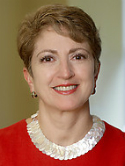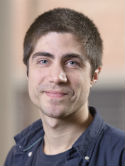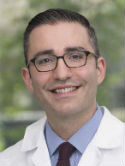Distinctive infectious complications in patients with central nervous system lymphoma undergoing thiotepa, busulfan, and cyclophosphamide-conditioned autologous stem cell transplantation Journal Article
| Authors: | Scordo, M.; Morjaria, S. M.; Littmann, E. R.; Bhatia, A.; Chung, H. H.; Maloy, M.; DeAngelis, L. M.; Giralt, S. A.; Taur, Y.; Sauter, C. S. |
| Article Title: | Distinctive infectious complications in patients with central nervous system lymphoma undergoing thiotepa, busulfan, and cyclophosphamide-conditioned autologous stem cell transplantation |
| Abstract: | We investigated the incidence of viral, fungal, bacterial, and parasitic infections observed in 57 patients with central nervous system lymphoma after thiotepa, busulfan, and cyclophosphamide-conditioned autologous stem cell transplantation (TBC-ASCT) and 79 patients with systemic non-Hodgkin lymphoma after traditional carmustine, etoposide, cytarabine, and melphalan–conditioned ASCT (BEAM-ASCT). Twenty of 57 (35%) TBC-ASCT patients had detectable viremia with human herpesvirus 6, cytomegalovirus, adenovirus, or BK virus, versus 9 of 79 (11%) BEAM-ASCT patients. Eight TBC-ASCT patients had clinically relevant viral infections (4 human herpesvirus 6, 2 cytomegalovirus, 1 adenovirus, 2 BK virus), versus 0 in the BEAM-ASCT group. Four TBC-ASCT patients suffered infections from either a fungal or parasitic pathogen versus 1 BEAM-ASCT patient. TBC was associated with greater risk of viral reactivation compared with BEAM, independent of other factors (hazard ratio, 4.42; 95% confidence interval, 1.9 to 11.3; P <.001). Prolonged lymphopenia and steroid use in the peri- and post-ASCT period did not explain these observed differences. The pathogenesis of these unusual infections in TBC-ASCT patients remains incompletely understood, and may involve more potent immune suppression with TBC conditioning. Clinicians should be aware of these differences in infection risk in TBC-ASCT patients, which more closely parallel those seen in allogenic hematopoietic cell transplantation recipients. New prophylactic approaches to help minimize these infections should be considered in this population. © 2018 The American Society for Blood and Marrow Transplantation |
| Keywords: | adult; controlled study; middle aged; major clinical study; busulfan; primary central nervous system lymphoma; cytarabine; etoposide; cyclophosphamide; melphalan; autologous stem cell transplantation; carmustine; thiotepa; nonhodgkin lymphoma; transplantation conditioning; virus infection; bacterial infection; adenovirus infection; cytomegalovirus infection; mycosis; infection risk; virus reactivation; infectious complication; viremia; herpes virus infection; parasitosis; central nervous system lymphoma; diffuse large b cell lymphoma; infectious complications; human; male; female; article; human herpesvirus 6; bk virus infection; high-dose therapy and autologous stem cell transplantation |
| Journal Title: | Biology of Blood and Marrow Transplantation |
| Volume: | 24 |
| Issue: | 9 |
| ISSN: | 1083-8791 |
| Publisher: | Elsevier Inc. |
| Date Published: | 2018-09-01 |
| Start Page: | 1914 |
| End Page: | 1919 |
| Language: | English |
| DOI: | 10.1016/j.bbmt.2018.04.013 |
| PUBMED: | 29679773 |
| PROVIDER: | scopus |
| PMCID: | PMC6163063 |
| DOI/URL: | |
| Notes: | Article -- Export Date: 1 November 2018 -- Source: Scopus |
Altmetric
Citation Impact
BMJ Impact Analytics
MSK Authors
Related MSK Work













